If you’re a fan of succulents, you’ve likely come across the beautiful and varied kalanchoe. These fascinating plants are native to Madagascar and are known for their unique leaf shapes, colorful flowers, and ease of care. In this article, we’ll explore the key characteristics of kalanchoe succulents and provide tips on how to care for and propagate these popular plants.
What is Kalanchoe?
Kalanchoe is a genus of flowering succulent plants that is native to Madagascar. It is part of the Crassulaceae family, which also includes popular plants such as jade plants and sedum. There are over 200 known species of kalanchoe, each with its own unique characteristics.
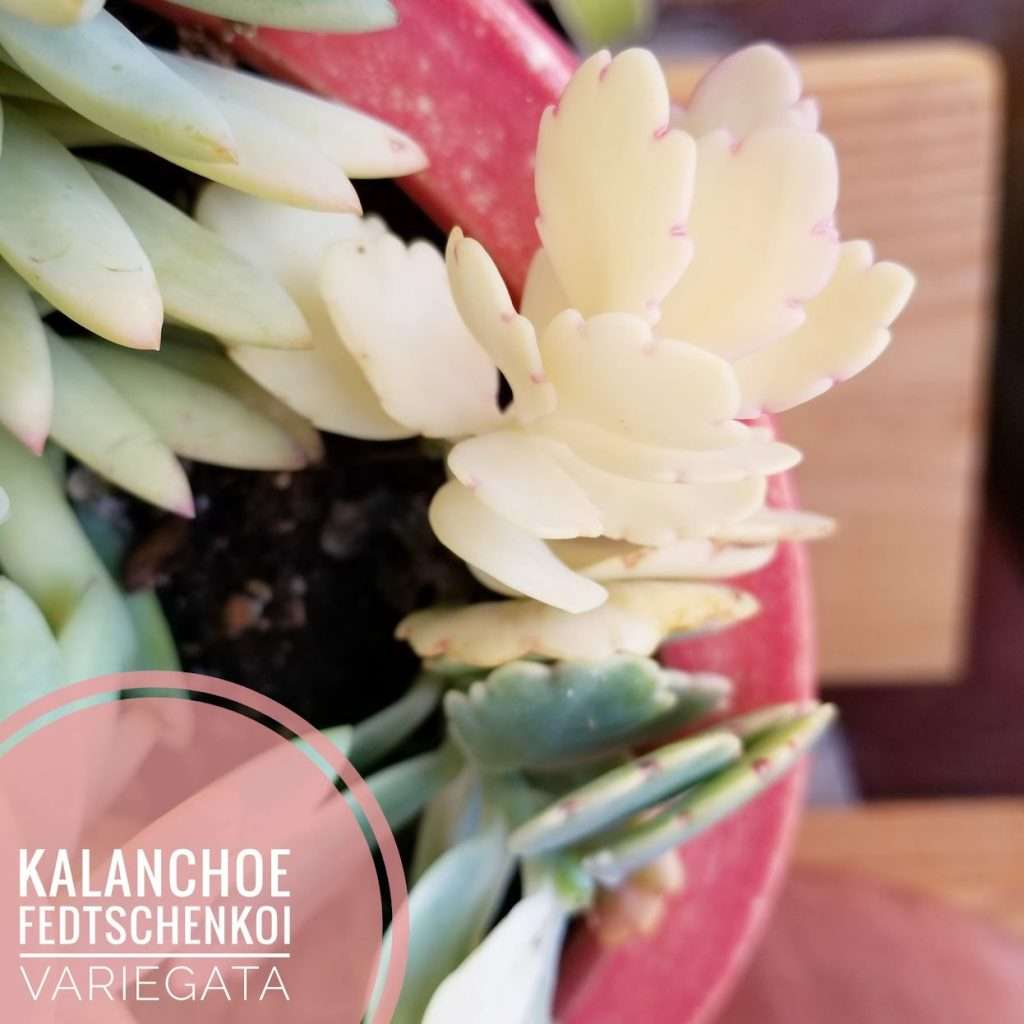
Kalanchoe plants are known for their colorful, bell-shaped flowers and unique leaf shapes, which can range from simple and oval to more complex and elongated. They are often used as ornamental plants in gardens and indoor spaces and are popular for their ease of care and ability to thrive in a wide range of conditions.
Kalanchoe Care and Maintenance
Kalanchoe plants are generally easy to care for and can thrive in a wide range of conditions. Here are some tips for caring for your kalanchoe:
Water: Kalanchoe plants are drought-tolerant and do not require frequent watering. Allow the soil to dry out completely between waterings, and then water deeply to thoroughly moisten the soil. Be careful not to overwater, as kalanchoe is susceptible to root rot.
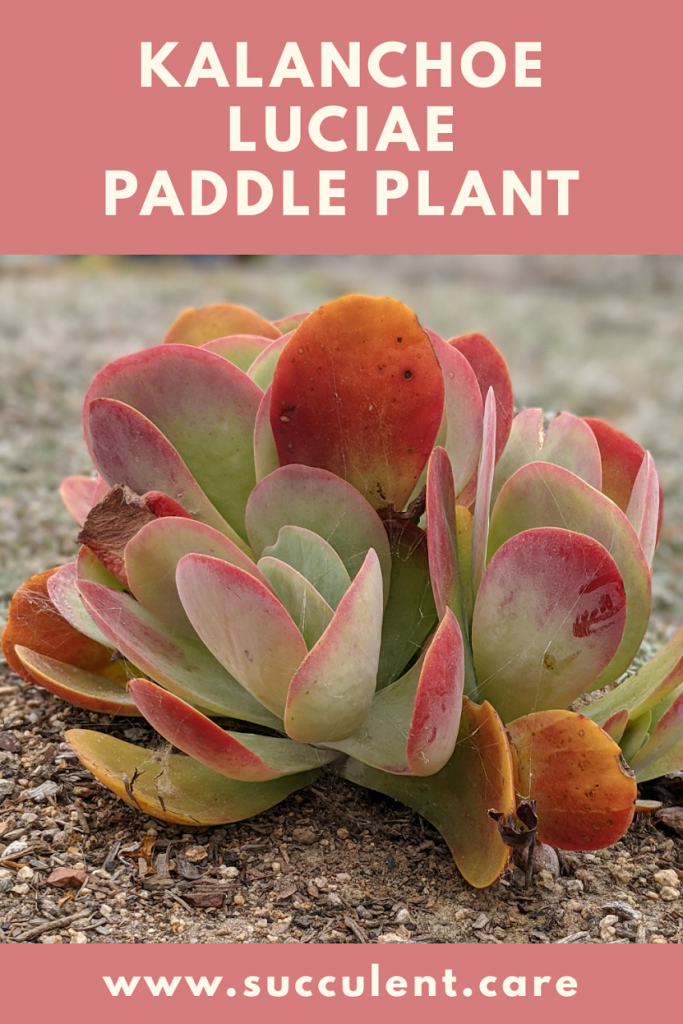
Soil: Kalanchoe requires well-draining soil in order to thrive. A cactus or succulent potting mix is a good choice, or you can make your own by mixing equal parts potting soil, perlite, and coarse sand.
Light: Kalanchoe prefers bright, indirect light. It can tolerate some direct sunlight, but it is important to protect it from intense midday sun, which can scorch its leaves.
Fertilizer: It does not require much fertilizer. If you choose to fertilize, use a balanced, water-soluble fertilizer at half strength once a month during the growing season.
Temperature: It is hardy and can tolerate a wide range of temperatures, but it should be protected from frost. It can be grown outdoors in temperate climates, but should be brought indoors in colder regions.
Are Kalanchoe toxic to humans or animals?
Some Kalanchoe species do contain toxic compounds that can be harmful to humans and animals. The most toxic Kalanchoe is Kalanchoe pinnata, also known as airplant, cathedral bells, or Mexican hat plant. The leaves and stems of Kalanchoe pinnata contain cardiac glycosides, which can cause nausea, vomiting, and abnormal heart rhythm in high doses. Other Kalanchoe species also likely contain some level of toxicity, though the effects seem to be milder than K. pinnata. It is best to keep all Kalanchoe plants out of the reach of children and pets, and avoid ingesting any part of the plant. If ingested, drink plenty of water and seek medical attention.
• The toxicity is dose-dependent. Ingesting a small amount of the leaves may only cause minor stomach upset, while ingesting a large quantity could lead to serious heart problems or even death. Any ingestion of Kalanchoe should be treated seriously and medical help sought.
• Cooking or drying it does not neutralize the toxicity. The cardiac glycosides are resistant to heat and drying, so prepared teas or dried leaves should not be ingested. All parts of Kalanchoe are considered toxic and should be kept away from children and pets.
Why do Kalanchoe develop such thick air roots?
Kalanchoe plants develop thick air roots for several reasons:
• The air roots help absorb moisture from the air. As epiphytic plants that originate in arid climates, Kalanchoe rely on moisture absorption from the air to supplement the water they get from their roots. The thick, succulent air roots are adapted to absorb and store water vapor, helping the plant survive dry periods.
• The air roots aid in attachment to surfaces. The air roots allow Kalanchoe to attach to rocks or other surfaces, which helps the plant support itself as it grows tall or hangs down. The root hairs and thick, woody structure of the air roots provide adhesion and anchorage for the plant.
• The air roots may perform photosynthesis. Some studies suggest that the air roots of Kalanchoe can perform photosynthesis, helping the plant produce its own food. The air roots generally turn greenish when exposed to light, indicating they may be capable of photosynthesis to supplement the plant’s nutrition. More research is needed on this potential function of the air roots.
• The air roots help stabilize the plant. The extensive system of thick air roots gives Kalanchoe stability and balance, especially as the plant produces tall flower stalks or bending stems. The air roots act as structural support for the plant in addition to helping absorb moisture and nutrients and potentially photosynthesizing. The air roots play an important role in the growth and survival of Kalanchoe plants.
You might also like: What are aerial roots and why do they happen?
Kalanchoe Propagation
Kalanchoe is known for its ability to grow and propagate easily, making it a popular choice for gardeners and plant enthusiasts. It can be propagated through leaf or stem cuttings or by dividing the plant into smaller sections and planting them in separate pots.
To propagate through leaf cuttings, follow these steps:
- Gently twist or cut a healthy leaf from the base of the plant.
- Allow the leaf to callous over for a few days by leaving it out in a dry, well-ventilated area.
- Once the leaf has calloused, place it on top of well-draining soil and gently press down to secure it in place.
- Water the soil lightly, being careful not to disturb the leaf.
- Keep the soil moist but not wet, and place the plant in a bright, indirect light location.
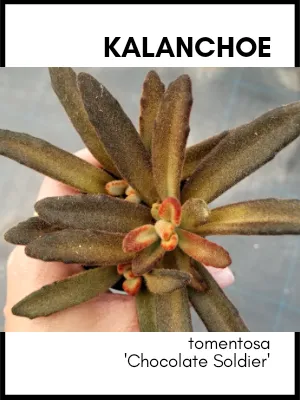
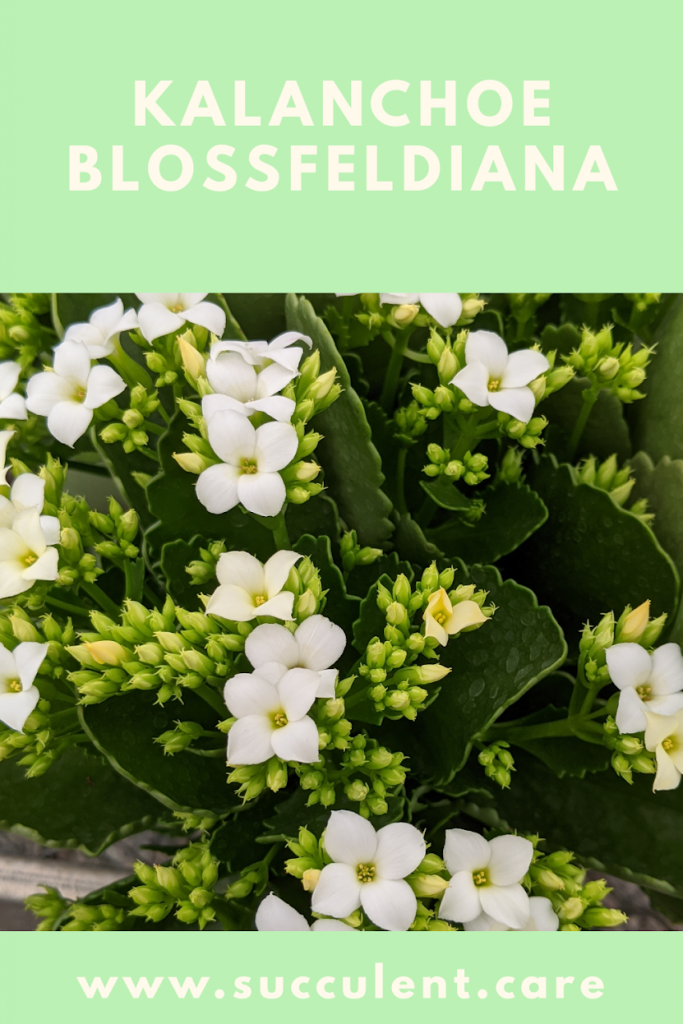
To propagate through stem cuttings, follow these steps:
- Gently twist or cut a healthy stem from the base of the plant.
- Remove any leaves from the lower half of the stem.
- Allow the stem to callous over for a few days by leaving it out in a dry, well-ventilated area.
- Once the stem has calloused, place it in well-draining soil and gently press down to secure it in place.
- Water the soil lightly, being careful not to disturb the stem.
- Keep the soil moist but not wet, and place the plant in a bright, indirect light location.
You might also like: Propagating Succulents 4 Ways: The Best Guide Ever
Some species, such as K. daigremontiana, have the ability to produce plantlets or offsets on their leaves or stems. These plantlets are small, fully-formed plants that can be easily separated from the parent plant and propagated on their own.
To propagate plantlets, simply follow these steps:
- Gently twist or cut the plantlet from the parent plant.
- Allow the plantlet to callous over for a few days by leaving it out in a dry, well-ventilated area.
- Once the plantlet has calloused, place it in well-draining soil and gently press down to secure it in place.
- Water the soil lightly, being careful not to disturb the plantlet.
- Keep the soil moist but not wet, and place the plant in a bright, indirect light location.
It is important to handle the plantlets gently and avoid damaging the roots when separating them from the parent plant. With proper care, the plantlets should take root and grow into fully-formed plants.
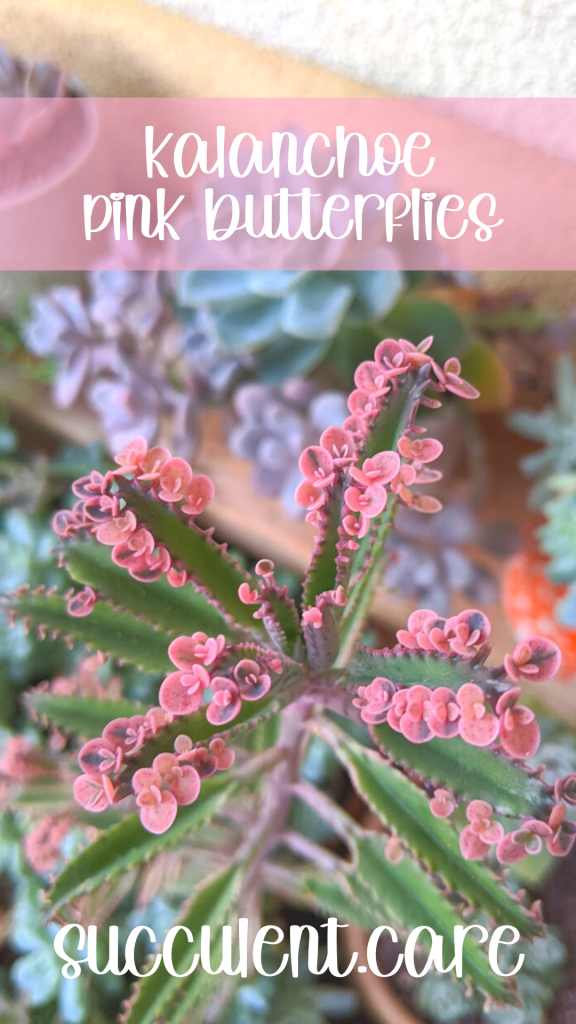
What are some common pests and diseases that affect Kalanchoe succulents?
Some common pests and diseases that can affect kalanchoe succulents include:
• Mealybugs: Mealybugs are small, white, cottony pests that suck sap from kalanchoe. They can weaken plants and cause leaf drop. Isolate infested plants and wipe away mealybugs with a cotton swab dipped in alcohol. For heavy infestations, you may need to treat with insecticide.
• Scale: Scale insects appear as brown or black spots on kalanchoe that suck sap. They can damage plants over time. Physically remove scale with a toothpick or scrub brush and apply insecticidal soap or neem oil. Severely infested plants may need disposal.
• Aphids: Aphids are small, soft-bodied pests that feed on sap. They leave behind a sticky residue and can spread disease. Blast aphids off plants with a strong spray of water. For persistent infestations, use insecticidal soap or neem oil. Isolate and monitor heavily infested kalanchoe.
You might also like: 12 Succulent Pests and Diseases: Identification, Treatment, and Easy Prevention of Mealybugs, Thrips and More
• Rot: Excess moisture can lead to various types of rot, including root rot and stem rot. Rotted tissue will be soft and discolored. Improve air circulation and keep soil well-draining. Only water when the soil is dry to avoid rot. Remove damaged tissue and repot in fresh soil if needed.
You might also like: Root Rot in Succulents: How to Identify and Treat the Problem
• Sunburn: Intense sun exposure can burn their leaves, causing brown spots or patches. Move the affected succulents out of direct sun or provide shade during the hottest parts of the day to avoid sunburn. Damaged leaves will not heal, so keep it out of intense sun on affected areas.
You might also like: All About Sunburnt Succulents and Valuable Ways Prevent It + 6 Kinds That Can Handle More Sun
Watch for these common pest and disease issues when caring for yours. Quick treatment and adjustments to conditions will help keep your succulents healthy. With adequate light, well-draining soil, and proper watering, they can thrive and avoid many problems. However, continue monitoring for any potential pests or disease and tackle issues early to support your Kalanchoe.
What are the most common mistakes people make when caring for Kalanchoe?
Some common mistakes when caring for kalanchoe include:
• Overwatering. Kalanchoe succulents are prone to root rot if soil stays moist for too long. The most common care mistake is watering too frequently or too much. Only water them when the soil is completely dry. Check soil before watering and never leave it sitting in water.
You might also like: How & When to Water Succulents So They Don’t Die (2023 Update)
• Inadequate light. Kalanchoe needs lots of bright light to thrive, whether from sunlight or a grow light. Placing it in too dark of a spot will cause it to etiolate and drop leaves. Provide at least 6 hours of direct sun per day or use a grow light to give them sufficient illumination.
You might also like: How Much Light Do Succulents Need? A Comprehensive Guide in 12 Parts
• Inconsistent conditions. Dramatic fluctuations in light, temperature, or moisture can stress kalanchoe. Try to maintain relatively steady conditions for your succulents. Place them in a spot with consistent sunlight and temperatures and water when the soil dries out. Avoid moving them to different conditions too quickly or exposing it to intense changes, which may shock the plant.
• Lack of pruning. Some Kalanchoe species and varieties can grow quite large and leggy over time. Pruning leggy growth can help them grow in a more compact, bushy shape. However, they should only be pruned in spring or summer when actively growing. Trim off long stems or shape the plant as desired, but do not remove more than 1/3 of the foliage at once to avoid shock.
• Neglecting fertilizing. While they do not need rich fertilizing, providing nutrients during the growing season can help support healthy growth. Use a balanced succulent fertilizer diluted to 1/2 the recommended strength once a month during spring and summer. Cease feeding in fall and winter when growth slows. Lack of fertilizing will not harm kalanchoe, but may limit robust growth.
You might also like: Succulent Fertilizer: The Ultimate Guide to Healthy Succulents + 8 DIY Fertilizer Recipes
Avoiding these common mistakes will help yours thrive. With proper light, watering, conditions, pruning, and occasional fertilizer, they can grow well and produce their unique and colorful foliage and flowers. While relatively easy to care for, they still need attention to their specific needs. Following the proper care guidelines for your Kalanchoe will keep it growing and blooming beautifully.
Kalanchoe Varieties
There are many different species and varieties of kalanchoe, each with its own unique characteristics. Some popular varieties include:
- Kalanchoe blossfeldiana ‘Flaming Katy’: This is a popular variety known for its colorful flowers and attractive foliage. It comes in a range of colors including red, pink, orange, and yellow.
- Kalanchoe tomentosa: This variety is also known as “panda plant” or “chocolate soldier” due to its furry, gray-green leaves. It is known for its ease of care and ability to thrive in a wide range of conditions.
- Kalanchoe beharensis: This is a large, shrub-like variety known for its fuzzy, silver-gray leaves. It can grow up to 8 feet tall and is often used as an ornamental plant in gardens and outdoor spaces.
- Kalanchoe fedtschenkoi ‘Lavender Scallops’: This is a smaller variety known for its trailing growth habit and red, pink, or white flowers. It is often used in hanging baskets or as a ground cover plant.
Conclusion
Kalanchoe is a diverse and fascinating genus of succulent plants that is known for its colorful flowers and unique leaf shapes. With proper care and attention, they can thrive in a wide range of conditions and is a popular choice for both indoor and outdoor gardening. Whether you’re a seasoned plant enthusiast or new to the world of succulents, kalanchoe is a plant that is sure to capture your heart.

Where to Buy Succulents Online

